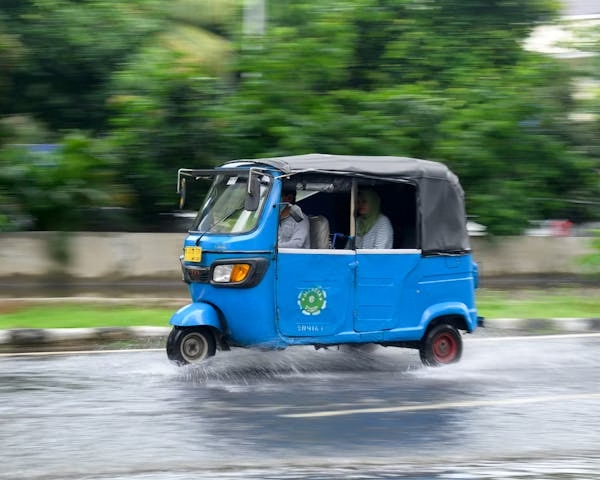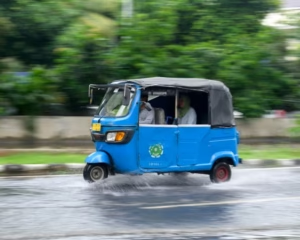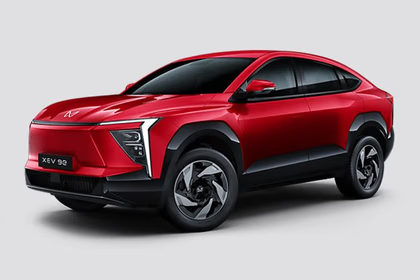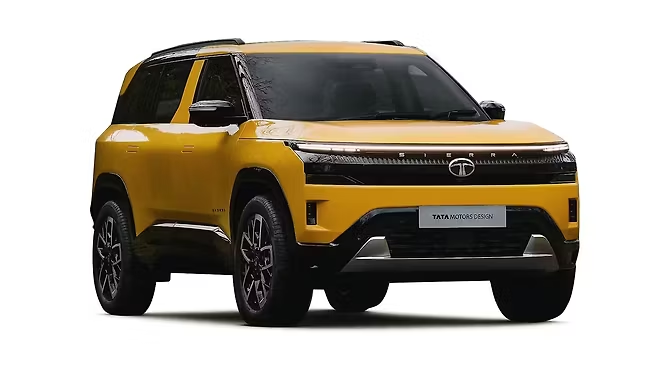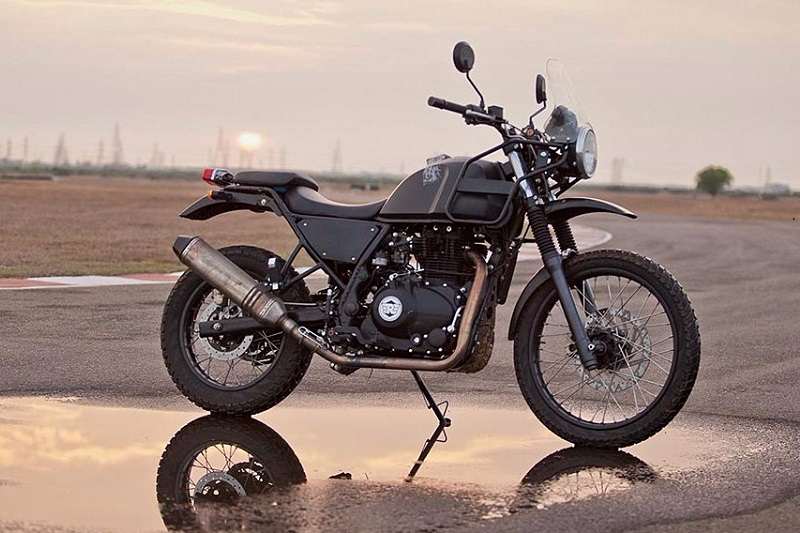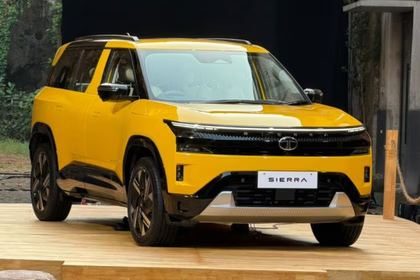Introduction
Let me share with you some great news that will lead you down a new path and open up many opportunities to earn. You may be aware that India is experiencing a rapid revolution on its roads, driven not by gasoline but by clean, efficient electricity. In the last few years, the latest e-rickshaws have made e-rickshaws a familiar sight in cities, towns, and even in rural areas.
They emit zero tailpipe pollutants, have much lower operating expenses, and have lower maintenance costs in comparison with their petrol or diesel equivalent. Additionally, government incentives and state subsidies have made the latest e-rickshaw as affordable as possible for both purchasers and drivers seeking a secure means of livelihood.
Whether you are a first-time purchaser, a fleet owner, or simply a curious consumer in the electric vehicle space, you can be sure to make an informed choice and lead the pack in the electric mobility sector with our guide.
- Factors to Consider Before Buying an E-Rickshaw
- Battery Type (Lead-acid vs Lithium-ion)
- Range Per Charge
- Charging Time
- Load Capacity and Seating
- Brand Reputation and Service Network
- Warranty and After-Sales Service
- Latest E-rickshaw Model:
- Mahindra Treo
- Piaggio Ape E-City
- YC Electric Yatri Super
- Lohia Comfort E-Auto
- Kinetic Safar Smart
- Government Schemes & Subsidies for E-Rickshaws (2025)
Benefits of Choosing an E-Rickshaw
Opting for the latest e-rickshaw isn’t only a wise financial choice, it’s also a move towards a greener, cleaner tomorrow. As electric mobility becomes more popular in India, the latest e-rickshaws are transforming into the transport of choice for passengers and riders alike. Let’s take a closer look at the main advantages of owning or driving the latest e-rickshaw:
Eco-Friendly and Zero Emissions
E-rickshaws use electricity only, and therefore, they emit no tailpipe emissions, which mitigates urban air pollution enormously. This is a significant relief in India, where several cities grapple with poor air quality. If we substitute conventional petrol or diesel auto-rickshaws with electric ones, we can minimize the public transport carbon footprint and augment national efforts to tackle climate change. E-rickshaws are also quieter, reducing noise pollution on congested roads.
Lower Running and Maintenance Costs
One of the most attractive features of e-rickshaws is the cost. The daily operational expense of an e-rickshaw is much less than that of a traditional petrol or diesel-powered vehicle. An electric rickshaw is charged a mere few rupees, particularly when compared to volatile gasoline or diesel prices. E-rickshaws also have less number of moving parts, thus less wear and tear, fewer breakdowns, and lower maintenance costs. In the long run, this means improved savings and profitability, particularly for day-to-day commercial operators.
Government Subsidies and Incentives
The Indian government, through initiatives such as FAME II (Faster Adoption and Manufacturing of Hybrid and Electric Vehicles), provides a range of incentives to encourage the adoption of electric vehicles. Customers for e-rickshaws can receive subsidies on the cost of purchase, reduced GST on the purchase price, lower registration charges, and, in some states, even special support initiatives.
Income Generation Opportunities for Drivers
For most, particularly those in tier-2 and tier-3 cities, an e-rickshaw is not just a vehicle but a steady source of income. With the growth in the need for last-mile connectivity, demand for short-distance mobility has increased, especially in urban agglomerations and around public transport terminals.
Factors to Consider Before Buying an E-Rickshaw
Purchasing the latest e-rickshaw is a long-term commitment. Here I am giving you a detailed point to consider before buying the newest e-rickshaw:
Battery Type (Lead-acid vs Lithium-ion)
- The battery is the core of every latest e-rickshaw, significantly determining the vehicle’s performance, charging duration, and maintenance schedule.
- Lead-acid batteries are initially less expensive to purchase and more readily available. They are, however, heavier, have a shorter lifespan (typically 1–1.5 years), and require constant maintenance, such as topping up distilled water.
- Lithium-ion batteries, despite costing more upfront, weigh less, charge quicker, last longer (3–5 years), and require no maintenance. They are ideal for those seeking long-term value and enhanced performance.
- Selecting the appropriate battery type is based on your price range, usage rate, and ability to pay extra for quality.
Range Per Charge
- The range of the latest e-rickshaws shows one of the most critical factors, especially for commercial use.
- The latest e-rickshaw offers a range of 120 km on a single charge.
- The model that meets your daily distance requirements without needing mid-day charging.
- Ensure that you verify the range in real-world conditions, as it may differ slightly from the manufacturer’s specification, particularly under full-load conditions.
Charging Time
- Charging time influences your vehicle’s uptime and productivity.
- Batteries generally take 8–10 hours to charge.
- Lithium-ion batteries are quicker, taking 3–5 hours on average.
- More time on the road and greater daily earnings mean faster charging. If available, opt for models with fast charging capabilities.
Load Capacity and Seating
- Depending on the application—whether it is the delivery of goods or the transportation of passengers—the seating arrangement and carrying capacity will differ.
- A typical passenger’s latest e-rickshaw has a seating capacity of 3–4 passengers, including the driver.
- Cargo’s latest e-rickshaw has a loading capacity of 300–500 kg or above.
Brand Reputation and Service Network
- A well-known brand typically translates to improved build quality, proven performance, and access to genuine parts.
- Select a proven track record, ideally one that is ICAT or ARAI-certified.
- Look for a wide-ranging service network and readily available spare parts in your local area.
- Popular brands such as Mahindra, Piaggio, YC Electric, and Atul enjoy more dependable support structures, minimizing downtime in the event of technical problems.
Warranty and After-Sales Service
- Warranty protection is a good sign of a company’s faith in its product.
- Ensure that e-rickshaws provide a minimum of 1-year warranty for the vehicle and 3 years for the battery.
- Assess the after-sales service, such as free service calls, home-based assistance, and replacement policies.
Latest E-rickshaw Model:
Mahindra Treo
The Mahindra Treo is one of the latest e-rickshaws, offering a range of over 150 km on a single charge and charging in approximately 4 hours. The Treo is popular for its sleek design, robust chassis, and superior build, making it perfectly suited for urban and semi-urban conditions. Also equipped with a digital instrument cluster, telematics, and ample legroom for passengers, making it the top pick for both fleet operators and private drivers.
Piaggio Ape E-City
The Piaggio Ape E-City is a brand that is trusted in the commercial transport category. It features a swappable lithium-ion battery, allowing users to easily switch batteries and return to service just after a coffee break. It has a range of 100 km, offers smooth ride comfort, and is designed for intra-city passenger transportation. It has improved safety features and benefits from Piaggio’s extensive service network.
YC Electric Yatri Super
The Yatri Super by YC Electric is a widely used lead-acid battery rickshaw that offers affordability with performance. It has a range of 90 km per full charge and is best suited for short-distance passenger travel. Yatri Super is widely used in both urban and suburban markets. Low maintenance cost makes it popular among independent operators.
Lohia Comfort E-Auto
Lohia Auto’s Comfort E-Auto is its most stylish and comfortable vehicle to ride. It comes with lead-acid and lithium-ion batteries, priced at two different budget levels. The car offers a mileage of 100 km, features well-cushioned seats, and is designed for urban driving. Lohia also offers good post-sales support and warranty, making it an attractive choice.
Kinetic Safar Smart
The Kinetic Green Safar Smart is made for city last-mile connectivity. It has a lithium-ion battery, provides a range of approximately 100 km, and charges in 3–4 hours. The model features a lightweight yet sturdy frame, making it easy to manoeuvre in heavy traffic. It also features a contemporary digital dashboard and robust tyres for improved road grip, making it a good choice for drivers who require both performance and modern looks.
Government Schemes & Subsidies for E-Rickshaws (2025)
The adoption of e-rickshaws and electric vehicles in India. In 2025, many central and state-level programs will continue to offer financial subsidies, reducing the cost of the latest e-rickshaws and making them more appealing to consumers. A closer examination of the most important government programs and subsidies provided for the purchase of the newest e-rickshaw follows:
FAME II Updates (Faster Adoption and Manufacturing of Hybrid and Electric Vehicles)
- The FAME II scheme initiated by the Government of India is one of the strongest country-level initiatives to boost electric mobility. Extended until 2025, this scheme provides direct subsidies on electric vehicles, including the latest e-rickshaw.
- The subsidy is provided to eligible e-rickshaws up to Rs. 50,000 per unit based on battery capacity and model.
- The subsidy is directly applied to the vehicle’s ex-showroom price.
- Only models approved by reputable agencies, such as ARAI or ICAT, are considered under FAME II.
- The scheme also encourages the development of charging infrastructure, enabling e-rickshaws to be charged more easily in public and semi-urban areas.
State-Wise Subsidies and Tax Exemptions
- Apart from FAME II, most Indian states offer additional subsidies and incentives for the local adoption of electric rickshaws. These are state-dependent but can include:
- Capital subsidies of Rs. 10,000 to Rs. 30,000 for those eligible for e-rickshaws.
- Exemptions from road tax and registration charges, lowering recurring and initial expenditures.
- Interest subsidies or soft loans are extended through state-owned banks or cooperative finance institutions.
- Scraping incentives for old diesel/petrol rickshaws upon replacement with electric ones.
For instance:
- Delhi provides up to Rs. 30,000 of extra subsidy and complete exemption from road tax and registration charges.
- Uttar Pradesh, Bihar, and Jharkhand have localized schemes with purchase incentives and simple permits.
- Maharashtra and Tamil Nadu offer additional benefits for commercial operators and fleet purchases.
- Buyers need to verify the latest eligibility and subsidy details on their individual state transport department’s website or the local Regional Transport Office (RTO).
Registration and RTO Support:
- The latest E-rickshaw registration is compulsory and has become more streamlined in recent years.
- Electric rickshaws are exempted from certain conventional commercial permit requirements, state-dependent.
- Several RTOs also provide digital registration procedures and quick approvals for electric vehicles.
- The vehicle must be ICAT/ARAI certified, a requirement for registration and receipt of the subsidy.
- States are also promoting the development of e-rickshaw driver cooperatives and SHGs (Self-Help Groups) to help with registration, training, and funding.
- Overall, the central support under FAME II, combined with state-level incentives, makes 2025 an ideal time to invest in the latest e-rickshaw models.
Buying Guide: Tips for First-Time Buyers
Buying an e-rickshaw for the first time. Here are some tips and best practices for first-time buyers of the latest e-rickshaw in 2025 are as follows:
Authorized Dealers vs Local Vendors
Always opt for purchasing from authorized dealerships rather than unverified local dealers. Authorized dealers:
- Sell authentic, certified models approved under the FAME II and other government schemes.
- Provide manufacturer warranties and access to after-sales support.
- Ensure registration and insurance of the vehicle.
- Typically, I assist with paperwork related to government subsidies and financing.
- Local vendors may offer lower prices but often compromise on quality, certification, or post-sale service, resulting in higher long-term costs.
- Verify the dealer’s credentials and check online reviews or customer feedback before finalizing your purchase.
Verifying Vehicle Certification (ICAT/ARAI)
- Ensure the latest e-rickshaw you’re purchasing is certified by either the International Centre for Automotive Technology (ICAT) or the Automotive Research Association of India (ARAI).
- Certified vehicles meet safety, performance, and environmental standards.
- ICAT/ARAI-certified e-rickshaws alone are entitled to FAME II subsidies and incentives at the state level.
- Request that the dealer provide certification documents or verify the model’s approval number on the official website.
- Purchase of non-certified vehicles may result in denial of registration, warranty claims, or even penalties from local authorities.
Financing Plans and EMI Schemes
- Numerous manufacturers and dealers offer convenient financing plans in collaboration with banks, non-banking financial companies (NBFCs), and government-sponsored schemes.
- Search for low-interest EMI schemes designed for daily wage earners.
- Certain banks offer 0% down payment schemes as part of their priority sector lending programs.
- Cooperative societies and public sector banks can offer subsidized loans under the state EV promotion policy.
- Compare several financing options before applying and identify the best interest rate and tenure. Ensure the loan covers the total cost, including insurance and accessories.
Maintenance Checklist and Best Practices
Good maintenance guarantees improved performance, longer battery life, and reduced repair expenses. First-time owners should be aware of:
- Charge to full capacity before use. Do not overcharge and follow the manufacturer’s maintenance requirements, particularly for the lead-acid batteries of your latest E-rickshaw.
- Keep tyres at recommended pressure for improved mileage and safety.
- Check for wear and tear regularly, particularly on bumpy roads or overloaded paths.
- Regularly clean and dry the car, particularly the battery area and electrical terminals.
- Have authorized service centres maintain the warranty intact and use high-quality repair components.
- It’s also advisable to maintain a record of service dates and costs, which can be useful in future resale or warranty claims.
Conclusion
Among the best models in 2025, the likes of the Mahindra Treo and Piaggio Ape E-City take the lead in terms of performance and technology, while the YC Electric Yatri Super, Lohia Comfort E-Auto, and Kinetic Safar Smart offer excellent value for money in more affordable segments. Every model comes with its advantages in terms of range, battery life, seating capacity, and charge convenience, making it more convenient than ever to choose the latest e-rickshaw that exactly suits your requirements.
Adopting e-mobility not only reduces your reliance on petrol and diesel and lowers your carbon footprint but also generates new sources of income and long-term savings. Backed by encouraging government subsidies under FAME II, tax benefits, and funding support, going electric is no longer a pipe dream—it’s a viable option now. The future of city and last-mile mobility is electric—join the movement by selecting the latest e-rickshaw that’s efficient, green, and geared up for tomorrow’s streets.
FAQs
Q.1 How long do e-rickshaw batteries last?
The lifespan of the latest e-rickshaw battery depends on its type and usage.
- Lead-acid batteries typically last between 12 to 18 months with proper maintenance.
- Lithium-ion batteries usually have a longer lifespan, generally ranging from 3 to 5 years.
- Regular charging habits and avoiding deep discharges can help maximize battery life.
Q.2 What is the average cost of full charging?
Charging the latest e-rickshaw is more economical than fuel-powered vehicles.
- On average, a full charge costs between Rs. 10 to Rs. 30, depending on the battery size and local electricity rates.
- This low cost significantly reduces daily running expenses and contributes to higher profitability for operators.
Q.3 How often do e-rickshaws need maintenance?
The latest E-rickshaw requires relatively low maintenance compared to conventional vehicles.
- Routine checks every 3 to 6 months are recommended for battery health, tyres, brakes, and electrical components.
- Lead-acid batteries need periodic topping up of distilled water, while lithium-ion batteries require less upkeep.
- Servicing at authorized centres helps maintain warranty coverage and prolong vehicle longevity.
Q.4 Can I convert a petrol rickshaw to an electric one?
Yes, conversion kits are available that can transform petrol or diesel rickshaws into electric vehicles.
- However, it’s important to ensure that certified professionals do the conversion and that the modified vehicle complies with safety and emission standards.
- Conversions may not always be eligible for government subsidies and could require re-registration as an electric vehicle.
- Many buyers prefer purchasing a purpose-built, latest e-rickshaw at a competitive price that offers better performance and warranty support.

